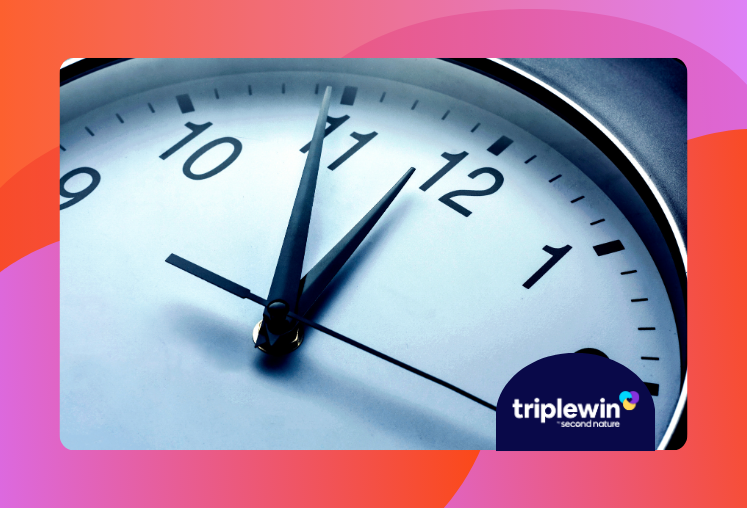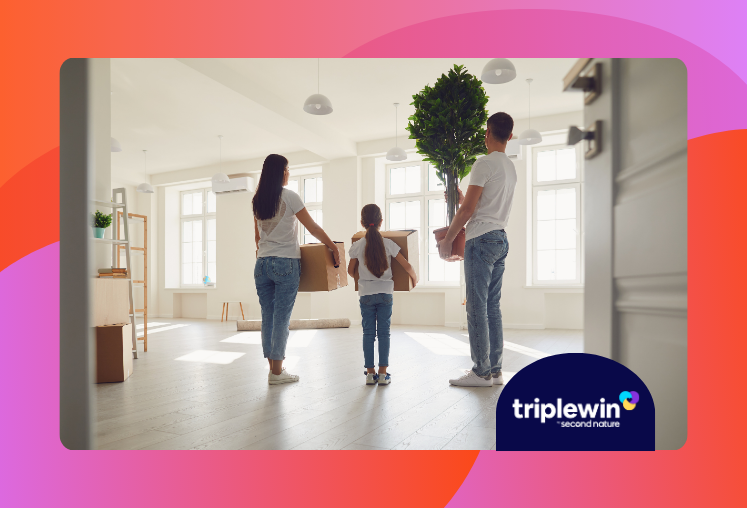Jennifer Ruelens is the broker/owner at One Focus Property Management, the largest property management company in North Central Pennsylvania. Jennifer has over twenty years of real estate experience, and 13 as broker/owner at One Focus. She also founded Hold It with PM Jen, a platform dedicated to helping investors grow wealth with the buy and hold real estate strategy. Jen is a Second Nature Triple Win Mentor.

The First 48: How the First Two Days of Vacancy Impact Everything Else
Picture this: it’s a Friday move-out at one of your properties. Your team doesn’t get in for the inspection until Tuesday because of the holiday weekend. By the time you’ve even laid eyes on the place, it’s been sitting vacant for three full days and nothing has been mobilized. That lag is painful and expensive. When we talk about reducing time to income or loss to vacancy, the first 48 hours after a move-out set the tone for everything else. Those two days determine whether you’re gaining momentum or playing catch-up. By focusing obsessively on mastering the first 48, you can increase net operating income for your clients and yourself, build owner trust, and create a smoother, less frustrating working experience for your team. Do a pre-inspection before you jump the gun When you get that notice of intent to move out, it’s tempting to immediately start pulling together a listing and ramping up the marketing machine. The problem is, until you set foot in that unit, you don’t know what kind of condition it’s in or what kind of work you’re going to need to do to move the next resident in. You don’t even know whether the resident will vacate on time. And you won’t know anything for sure until that resident has moved out all of their belongings and you can lay eyes on everything. The good news is, you can do a pre-inspection in the last month of tenancy to evaluate the situation and start making a turnover maintenance plan. Having information in advance allows you to prepare, which will cut down on your turnover time. Make sure you’re walking through the property carefully before move-out to get a sense of what needs to be fixed, cleaned, or updated. Make this a part of your lease and then actually follow through. With a well-run pre-inspection, nothing should be a surprise when you walk into a unit the day after move-out. It shouldn’t be a surprise to you, and it shouldn’t be a surprise to your owner. Gather as much information as possible In those first 48 hours after move-out, your job is to assess the situation and get to work. That means getting in the morning after you get possession of the home with a checklist in hand and a plan to start marking things off. Detail is key As you’re walking through the home, make note of everything that needs to be changed, fixed, or updated. How thorough your list is and how strong your process is will make all the difference. It’s not helpful to write down that you need ten sets of blinds if you don’t have measurements, colors, and materials. Time is lost when work has to be redone, or when information isn’t available or clear. Be thorough. This is your opportunity to collect the details that will make the rest of the process go smoothly. At my management company, we use video for move-out inspections. When clients or team members have questions, they can easily reference the video. Sometimes it means working the weekend It might seem easy to prioritize getting into a unit the day it’s vacant, but it gets complicated when all your move-outs are happening on the same day—especially if it happens to be a weekend. If turn day is a Saturday, you still need team members working that day, inspecting, logging inspections, and making priority lists. The way we used to run things, if a move-out was on a Friday, we weren’t in there until Monday. If it was a holiday weekend, we weren’t in until Tuesday. That didn’t seem like a big deal when we had a relatively small business, but at scale, those three days on every property have a massive cumulative impact. Make sure you’re setting expectations with the right team members that, sometimes, Saturdays might be working days. Get the right people in place ahead of time It’s all well and good to make a list of all the work you need done during a turnover, but it only matters if you actually get the pieces in place to start checking items off. Every single day of a vacancy, the heat is on. You need to make sure your vendors know exactly where they need to be and when, and you can’t just shrug it off when they don’t show up. In those first 48 hours, you should have a complete schedule of who’s doing what and when. It takes a lot of time and energy to keep things moving and on schedule. In my experience, communication between departments is the biggest source of delays during vacancy. You need to make sure you have both technology and processes in place to keep communication fast and clear. And don’t forget, as you’re lining up all of these vendors, you still need someone on your team to walk through and quality-check before it gets turned over to the marketing team. How embarrassing is it when your leasing agent goes to show a “rent-ready” property and the old light fixtures are still there, even though a vendor was supposed to replace them? Now you’ve got to reschedule the vendor and more showings. These frustrations not only lose time in the path back to income, they also stress out your team. Get owner buy-in The other essential step here is getting your owners bought in so they don’t have sticker shock. Throughout the last month of tenancy, you should be prepping the owner so they can prepare for the emotional weight of spending money on maintenance. You never want big expenses to be a last-minute surprise, which is what makes the pre-inspection so valuable. Even if you don’t know exactly what needs to be done, you should have a sense of things like carpet replacements or paint. Make sure you have a set of standards you don’t deviate from, and estimates of costs. For example, you should know what a kitchen of a certain size costs in your market. You should know what flooring or paint costs based on the square footage of the home. This is a great opportunity to lead with your expertise. This isn’t about saying, “The carpets are getting pretty gross!” Instead, it’s about saying, “Here are the options I’ve priced out for new carpet and LVP. This is what I recommend.” Be clear about what’s needed and why. When you have this conversation early—hopefully before the previous resident has moved out—you give the owner time to question, resist, and eventually accept the expenses they’re facing. It’s frustrating and costly when their indecision happens during vacancy and you can’t move forward. Vacancy work isn’t just maintenance, it’s marketing The final piece here is remembering all the marketing requirements for the property. In particular, getting a photographer or videographer on the schedule as early as possible can save you valuable time during vacancies. Whether you’re using a third-party photographer or someone on your team who’s really good with an iPhone, you should treat them like the rest of your vendors during a vacancy. They should know exactly what day they’ll be in the property, what areas you want them to highlight, and when you need photos delivered. Decide ahead of time whether you need new photos in the first place. If you’ve made significant changes to a property, it’s time to update those images. Photos and videos also have shelf lives simply because of how technology and trends change. They start to look and feel old just because of the camera you took them with. You should be able to quickly see when your most recent photos were taken so you can know whether they’re outdated. The debate over hardhat tours Ultimately, it’s up to you whether you want to list a vacant property before all of the turnover work is done. Hardhat tours can be effective in multifamily or in portfolios where you have similar, finished units to show a potential applicant. If there’s the right level of scarcity and demand, and you have the right leasing agent, hardhat tours can work. Final thoughts How you handle the first 48 hours of vacancy can make or break your bottom line, and your relationship with a client. By putting energy into kicking off the turnover, you increase NOI, build owner trust, and improve your team’s experience at work. Want more expert advice from property managers like Jen? Join the Triple Win Property Managers group on Facebook to connect with like-minded peers.
September 16, 2025
Read more







